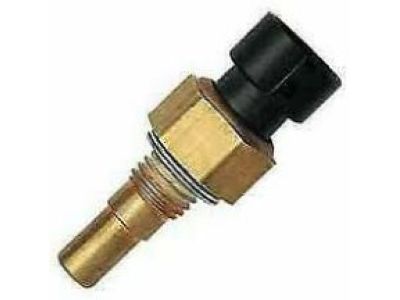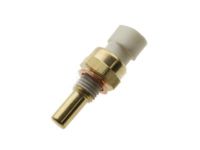My Garage
My Account
Cart
Genuine Chevrolet HHR Coolant Temperature Sensor
Coolant Water Temperature Sensor- Select Vehicle by Model
- Select Vehicle by VIN
Select Vehicle by Model
orMake
Model
Year
Select Vehicle by VIN
For the most accurate results, select vehicle by your VIN (Vehicle Identification Number).
2 Coolant Temperature Sensors found
Chevrolet HHR Sensor Assembly, Engine Coolant Temperature
Part Number: 12608814$30.69 MSRP: $57.90You Save: $27.21 (47%)Ships in 1-3 Business DaysChevrolet HHR Sensor, Engine Coolant Temperature
Part Number: 12611420$17.89 MSRP: $33.76You Save: $15.87 (48%)Ships in 1-2 Business Days
Chevrolet HHR Coolant Temperature Sensor
Coolant Temperature Sensor is a very important sensor in the Chevrolet HHR vehicles to measure the coolant temperature for efficient performance of vehicle's engine. This sensor is important in the routine measuring of the temperature of the coolant thus improved efficiency of the engine. It is possible that there are variations in the kind or design of Coolant Temperature Sensor for distinct HHR models, where the several styles possess their own effective means of measuring the temperature of the coolant. Knowledge about this component can guide drivers in making sure that their car will not have any performance issue due to the Coolant Temperature Sensor.
Each OEM Chevrolet HHR Coolant Temperature Sensor we offer is competitively priced and comes with the assurance of the manufacturer's warranty for the part. Furthermore, we guarantee the speedy delivery of your orders right to your doorstep. Our hassle-free return policy is also in place for your peace of mind.
Chevrolet HHR Coolant Temperature Sensor Parts Questions & Experts Answers
- Q: What Is the Function and Troubleshooting Process of the Coolant Temperature Indicator System and Coolant Temperature Sending Unit on Chevrolet HHR?A: The coolant temperature system includes a dashboard warning light or gauge, and an engine coolant temperature (ECT) sensor. It also works as the coolant temperature-sending unit for the Powertrain Control Module (PCM). If overheating is indicated, check the coolant level and wiring harness connectors. When the ignition is turned to START, the light should come on, showing the bulb works. If it doesn't, the bulb may be burned out, the ignition switch faulty, or the circuit open. When turning on the engine, the light should go off; if not, the engine is overheating. If it stays on, there could be a grounded wire, a defective sending unit, or a faulty ignition switch. Also, check the coolant mix, as high water content may not activate the sending unit.
- Q: How do you remove the ECT sensor on Chevrolet HHR?A: Turn the ignition key to OFF. Drain the cooling system. It's not necessary to fully drain the coolant, but it must be drained to a level that's below the level of the ECT sensor. Disconnect the electrical connector from the ECT sensor, which is located at the right front (passenger's side) corner of the cylinder head on 2.0L supercharged engines, near the valve cover. On 2.2L and 2.4L engines, the sensor is located in the thermostat housing, between the two heater hose pipes. On 2008 and later 2.0L turbocharged engines, the sensor is located at the left rear of the cylinder head (driver's side). You may need to unbolt the under-hood fuse and relay center, moving it aside for access. Unscrew the ECT sensor and remove it. Wrap the threads of the ECT sensor with Teflon tape. Installation is the reverse of removal. Be sure to tighten the ECT sensor to the torque specifications. Refill the cooling system when you're done.












